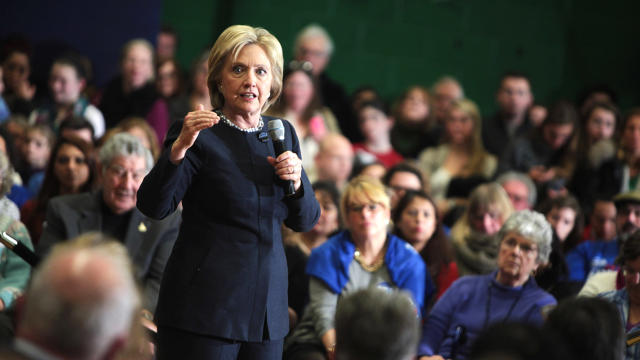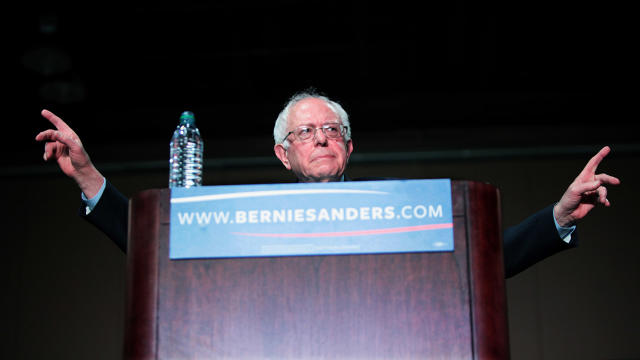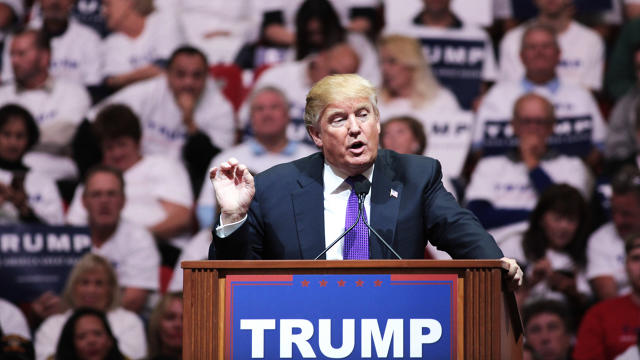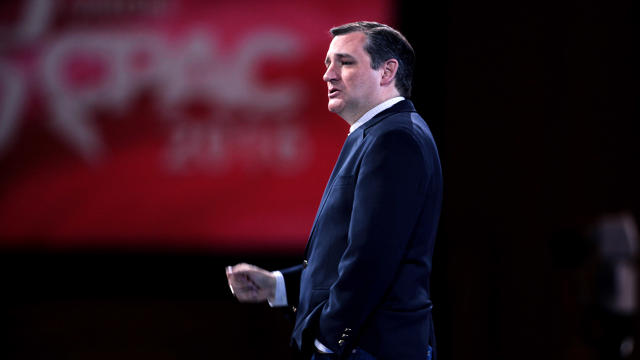The economy and employment are big areas of concern, not just to campaign watchers and Fast Company readers, but to anyone with a job or who’s looking for one. So far, the election cycle has been filled with plenty of bluster, so sometimes it’s difficult to suss out the candidates’ actual policy positions.
So we’ve done some of the sussing for you. Here’s a quick, if far from comprehensive, snapshot of the four leading candidates’ major proposals on job creation, employment, and business—some of the items that would have the biggest impact on the world of work.
Hillary Clinton
What she has promised to do. In a plan called “Make It in America,” Clinton proposes to invest $10 billion in “partnerships that link together all parts of the supply chain and build on the strength of a region in particular industries,” according to her website. “It builds on President Obama’s National Network for Manufacturing Innovation and bipartisan legislation written and spearheaded by Senator Sherrod Brown.”
The plan would also force companies that outsource jobs to forfeit tax relief and would impose an “exit tax” on companies that move their headquarters abroad in order to lower their tax burdens.

Clinton has proposed raising the minimum wage to $12 an hour and supports guaranteeing workers 12 weeks’ paid leave, “fully paid for by a combination of tax reforms impacting the most fortunate.” In a debate in Miami in March, she advocated for equal pay for women and wider support for women- and minority-owned small businesses.
Citing their negative impact on U.S. jobs, Clinton opposed the CAFTA and TPP trade agreements (after initially supporting the latter) yet supports other efforts to facilitate global commerce. “Trade has to be reciprocal,” she said at a New Hampshire debate in February. “That’s the way the global economy works. But we have failed to provide the basic safety-net support that American workers need.”
The praise and criticism for her proposals. Clinton’s plans, while more modest in scope and budget than Sanders’s, would likely face Republican resistance for both their spending and corporate tax components, and they’ve been challenged on the left for ceding too much ground to business interests. The Sanders campaign has called Clinton’s record on trade “abysmal,” citing her initial support for TPP, NAFTA, and other trade agreements.
When Clinton lost the Michigan primary in March, Sanders as well as some observers attributed it to her stance on free trade and its impact on Rust Belt workers. Still, Clinton enjoys considerable support from labor unions, including the National Education Association, the nation’s largest teachers’ union, despite criticism that her positions on labor have been uneven.
In 2009, the AFL-CIO, one of the oldest and largest unions in the country, gave Clinton a lifetime score of 94%, and according to the International Business Times, major labor unions have contributed some $6.3 million to super PACs and other organizations affiliated with Clinton’s campaign.
Bernie Sanders
What he has promised to do. Sanders has outlined a “Rebuild America Act” that would dwarf Clinton’s proposed job-creating expenditures, pouring $1 trillion into domestic infrastructure projects over a five-year period. “It would be paid for,” his website says, “by closing loopholes that allow profitable corporations to avoid paying taxes by, among other things, shifting their profits to the Cayman Islands and other offshore tax havens.”
A separate initiative would earmark $5.5 billion to fund state and municipal youth job-training programs. As a senator, Sanders has also introduced legislation to make it easer for workers to form and join unions, and to lower other obstacles to collective bargaining.

Sanders is categorical in his opposition to free trade, believing most such agreements to reflect the interests of large multinational corporations and their lobbyists as opposed to workers. Asked last October whether he’s been satisfied with any free trade agreements the U.S. has negotiated, Sanders replied no. He supports a nationwide $15 minimum wage and, like Clinton, ensuring 12 weeks of paid family and medical leave, but Sanders proposes to fund the latter through a $1.61 per employee weekly payroll tax—part of a bill that he and 18 Democrats have introduced in the Senate.
The praise and criticism for his proposals. Sanders’s proposals have come under fire for being unworkable given their high levels of spending and the likelihood of a Republican-controlled House (if not Senate), a charge he’s countered by underscoring the need for a “political revolution” that could remake the composition of Congress.
A University of Massachusetts–Amherst economist claimed earlier this year that Sanders’s plan would generate almost 26 million jobs and boost the median income by roughly $22,000, an analysis other economists sharply criticized, including prominent Obama Administration officials. Some of Sanders’s leading economic advocates, including Robert Reich, President Clinton’s labor secretary, seem to agree with the candidate’s critics that a broad electoral shift is the prerequisite to policy initiatives on this scale. They differ over the probability of that. Reich has written that “there’s a higher likelihood of kicking Republicans out if Bernie’s ‘political revolution’ continues to surge around America,” a premise that the Clinton camp and independent analysts say doesn’t look likely.
Still, Sanders’s free trade position clearly resonates with many primary voters, which is all the more noteworthy, as New York magazine points out, for breaking with Democratic Party orthodoxy dating back to Martin Van Buren. Sanders receives high marks from many of the leading U.S. labor unions, and last December scored an endorsement from the Communication Workers of America, a major force in the media sector.
Donald Trump
What he has promised to do. “I’m going to bring jobs back from China, Mexico, Japan, Vietnam,” Trump said in a February debate in South Carolina. “They are taking our jobs. They are taking our wealth.” While he has not offered specifics on how this might be accomplished, Trump has framed job growth in terms of tax and trade reforms.
Like Clinton, Trump says he supports free trade as long as it’s fair. His website emphasizes a need to reset trade relations with China by, among other things, holding the country accountable for “currency manipulation.” In addition, he supports “putting an end to China’s illegal export subsidies and lax labor and environmental standards,” lowering the U.S. corporate tax rate, and “attacking our debt and deficit so China cannot use financial blackmail against us.”
In a debate in November 2015, Trump said he would not raise the minimum wage and has expressed skepticism of federally mandated paid leave. He has been an outspoken advocate of tighter immigration policies, including deporting nearly 11 million undocumented immigrants in a bid to preserve jobs for current U.S. citizens.

Trump hasn’t taken an official stance on collective bargaining, but in February, the Washington Times reported, he struck a diplomatic note, telling New Hampshire voters, “I have tremendous support within unions, and I have tremendous support in areas where they don’t have unions . . . my support is really with those workers, those people.”
The praise and criticism for his proposals. Trump’s support, particularly among white, working-class voters, has survived intense criticism across the political spectrum on the feasibility of his plans to create and protect American jobs. Economists are doubtful as to Trump’s ability to reverse outsourcing. According to one Harvard economist who spoke with CNN Money in February, less than 5% of the roughly 20 million Americans who lose or change jobs involuntarily each year do so as a consequence of growing exports. In the same report, a University of Virginia economist puts it bluntly: “I can’t imagine anything our government could actually do to return employment in the manufacturing sector to the level it was before.”
Trump’s plan to deport millions of undocumented immigrants and construct a wall along the Mexican border—likewise in the name of safeguarding domestic employment opportunities—has been ridiculed as unfeasible or inadvisable by his opponents in both parties, rejected by the Mexican government, and estimated to cost up to $600 billion if fully implemented. The Tax Policy Center estimates his tax plan to cost the federal government $9.5 trillion over the next 10 years.
Trump’s claims to broad appeal among union workers appear largely true, judging from the intensifying efforts by labor leaders to defeat him. The AFL-CIO, for instance, has announced plans to ramp up its anti-Trump campaign earlier in the political cycle than the organization typically starts by making appeals to members.
Ted Cruz
What he has promised to do. Like Trump’s, Cruz’s jobs plan focuses on tax reform as a means of generating employment opportunities. He has proposed virtually abolishing the IRS and implementing a 16% flat tax on businesses in place of existing corporate income taxes, part of a plan that Cruz claims will boost the GDP by nearly 14% above current projections within the next decade and create nearly 4.9 million new jobs.

He opposes raising the minimum wage on the grounds that it would eliminate jobs, particularly among Hispanics and African-Americans, and opposes paid leave and widening other employment benefits for the same reason. “Extending unemployment benefits does exacerbate the jobless situation,” he told the AARP in 2012, “because it subsidizes unemployment and increases the tax burdens on those who are employed. Cruz supports a nationwide “right-to-work” law, similar to a measure adopted by Wisconsin under Governor Scott Walker last year, designed to limit the power of labor unions, which overwhelmingly oppose his candidacy as a result.
The praise and criticism for his proposals. The bulk of Cruz’s proposals on job creation and employment focuses on tax reform and rolling back commercial regulations, but he’s come under fire for offering few details on which spending cuts would cover the lost revenues from reducing taxes. A nonpartisan tax policy group estimates the cost of Cruz’s tax plan at $8.6 trillion. Some observers argue that Cruz’s business tax constitutes a value-added tax (VAT) since it would charge companies over the course of production, making them likely to pass those costs onto consumers by raising prices—something that would almost certainly be politically unpopular.
Cruz has underscored his support for small businesses, saying that his tax plans will benefit them the most. Last week he told ABC News, “My focus is very much on small businesses because economic opportunity, jobs, come from small businesses.” Cruz’s critics argue that his vaunted support comes at the expense of workers, whose employment benefits Cruz would limit, and of labor unions, whose influence he’d seek to curb.
